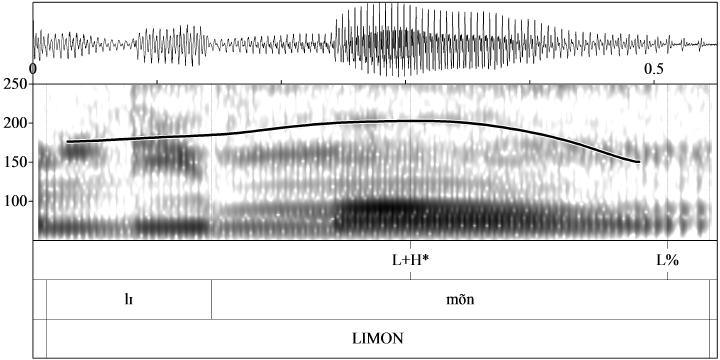Nuclear Contour, Stress and the Effects of Language Acquisition Context on Palenquero-Spanish Bilingual Speakers
 Image credit: Praat
Image credit: Praat
Abstract
Palenquero is an Afro-Hispanic creole language spoken in San Basilio de Palenque, Colombia, with around 200 elements of Bantu origin, and those who speak Palenquero also speak a local Spanish variety—Vernacular Spanish (VS). Previous work (Hualde & Schwegler, 2008) suggested that Palenquero stressed syllables correlate with a H level tone, and nuclear contours involving oxytonic words trigger the occurrence of this level tone without a boundary tone. New language revitalization efforts have resulted in younger community members acquiring Palenquero as an L2, and previous studies did not test for differences between older and younger speakers. We explore the intonational nuclear contours for declaratives ending with oxytonic and paroxytonic words, in Palenquero and VS. A total of 182 utterances were collected using the discourse completion task—culturally adapted to this speech community. The data analyzed in this study supports the hypothesis that age is a significant predictor (p<.05) because adults realized L+H*L% in nuclear contours of VS declaratives with oxytonic words, whereas young speakers exhibit sustained H tones in both Palenquero and VS.